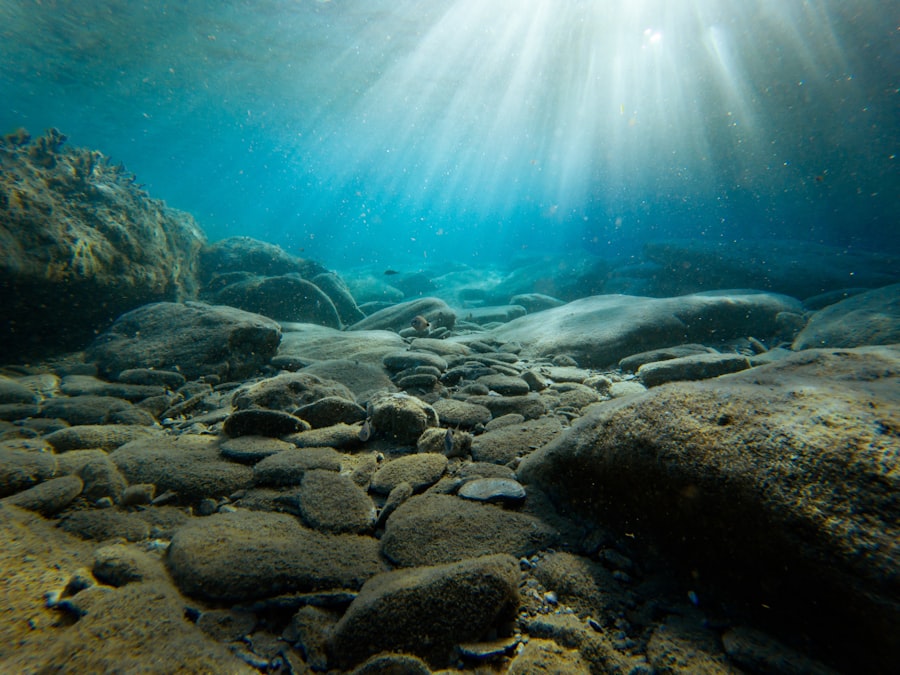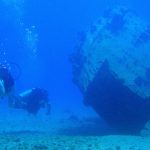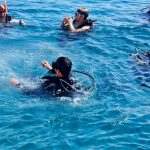Exploring the Shallow Seas: 8k8 Diving Adventure
Description
Shallow sea diving offers a unique and enchanting experience that captivates both novice and seasoned divers alike. The allure of exploring underwater ecosystems just beneath the surface is irresistible, as divers are greeted by vibrant coral reefs, swaying seagrass beds, and a kaleidoscope of marine life. Unlike deeper dives, shallow sea diving allows for extended exploration without the complexities of deep-sea diving, making it accessible to a broader audience.
The clarity of the water, combined with the sunlight filtering through, creates a mesmerizing ambiance that enhances the beauty of the underwater world. The shallow seas are often teeming with life, providing divers with opportunities to observe various species in their natural habitats. From colorful fish darting among the corals to the graceful movements of sea turtles gliding through the water, every dive presents a new adventure.
The shallow depths also allow for easier photography, as divers can capture stunning images of marine life without the challenges posed by deeper waters. The experience is not just about the sights; it’s also about the tranquility and connection to nature that shallow sea diving fosters. The gentle lapping of waves above and the soft sounds of the underwater world create a serene environment that invites divers to immerse themselves fully in the experience.
Key Takeaways
- Shallow sea diving offers the opportunity to explore vibrant and diverse marine life in clear, shallow waters.
- Essential gear for shallow sea diving includes a mask, snorkel, fins, and a wetsuit for protection and comfort.
- Encounters with marine life in shallow seas can include colorful fish, coral reefs, and even sea turtles and rays.
- Safety tips for shallow sea diving include checking weather conditions, diving with a buddy, and being mindful of your surroundings.
- Some of the best locations for shallow sea diving include the Great Barrier Reef, the Red Sea, and the Caribbean, but it’s important to be aware of the environmental impact of diving in these areas.
Gear and Equipment for Shallow Sea Diving
Wetsuits and Thermal Protection
A well-fitted wetsuit is essential, as it provides thermal protection and buoyancy control. Depending on the water temperature, divers may opt for shorty wetsuits or full-length suits.
Essential Accessories for Clear Vision and Breathing
Additionally, a dive mask with a comfortable fit is vital for clear vision underwater. Masks come in various styles, including those with built-in corrective lenses for divers who require vision correction. A snorkel can also be beneficial for shallow dives, allowing divers to breathe easily while observing marine life at the surface.
Fins, Buoyancy Control, and Safety Equipment
Fins are another critical component of diving gear, as they enhance mobility and efficiency in the water.
A buoyancy control device (BCD) is also recommended, even for shallow dives, as it helps divers maintain neutral buoyancy and control their ascent and descent. Additionally, carrying a dive computer or depth gauge is advisable to monitor depth and time spent underwater. Safety equipment such as a whistle or surface marker buoy can be invaluable in case of emergencies, ensuring that divers can signal for help if needed.
Marine Life Encounters in Shallow Seas

The shallow seas are home to an astonishing variety of marine life, making them a prime location for encounters with diverse species. Coral reefs, often found in these areas, serve as bustling ecosystems that support countless organisms. Divers may encounter schools of colorful fish such as clownfish, parrotfish, and angelfish weaving through the corals.
The vibrant colors and intricate patterns of these fish create a stunning visual display that leaves a lasting impression on those who witness it. In addition to fish, shallow waters are often frequented by larger marine animals such as rays and sea turtles. For instance, in places like the Caribbean, divers may have the chance to swim alongside majestic green sea turtles as they gracefully navigate their surroundings.
These encounters are not only awe-inspiring but also provide valuable insights into the behaviors and habitats of these creatures. Furthermore, shallow sea diving allows for close encounters with invertebrates such as starfish, sea urchins, and anemones, which add to the richness of the underwater experience. Observing these creatures in their natural environment fosters a deeper appreciation for marine biodiversity and highlights the importance of conservation efforts.
Safety Tips for Shallow Sea Diving
| Safety Tips for Shallow Sea Diving |
|---|
| 1. Always dive with a buddy |
| 2. Check your equipment before diving |
| 3. Stay within your limits and don’t push yourself |
| 4. Be aware of your surroundings and potential hazards |
| 5. Ascend slowly and perform safety stops |
| 6. Communicate effectively with your dive buddy |
| 7. Stay hydrated and avoid alcohol before diving |
While shallow sea diving is generally considered safe, adhering to specific safety guidelines is essential to ensure a secure experience. One of the primary safety tips is to always dive with a buddy. Having a partner not only enhances safety but also enriches the experience through shared exploration and discovery.
Divers should establish clear communication signals before entering the water and maintain close proximity throughout the dive. Another critical aspect of safety is being aware of environmental conditions such as currents, tides, and visibility. Before diving, it’s advisable to check local weather reports and consult with experienced divers or dive shops about current conditions.
Understanding how these factors can affect diving conditions is vital for making informed decisions about when and where to dive. Additionally, divers should be mindful of their air supply and monitor their depth regularly to avoid potential hazards associated with prolonged dives.
Best Locations for Shallow Sea Diving
There are numerous locations around the globe renowned for their exceptional shallow sea diving opportunities. One such destination is the Great Barrier Reef in Australia, where divers can explore vibrant coral gardens teeming with marine life just a few meters below the surface. The reef’s diverse ecosystems offer an array of experiences, from swimming with tropical fish to observing larger species like reef sharks and turtles.
Another popular location is Cozumel in Mexico, known for its crystal-clear waters and abundant marine biodiversity. The shallow reefs surrounding Cozumel provide ideal conditions for divers seeking to witness stunning coral formations and vibrant fish populations. Additionally, sites like Bonaire in the Caribbean are celebrated for their easy access to shallow dive sites directly from the shore, allowing divers to explore at their own pace without needing a boat.
Each of these locations offers unique underwater landscapes and experiences that cater to divers of all skill levels.
Environmental Impact of Shallow Sea Diving

While shallow sea diving can be an exhilarating experience that fosters appreciation for marine ecosystems, it also carries potential environmental impacts that must be addressed. One significant concern is coral reef damage caused by careless diving practices. Divers who inadvertently touch or stand on corals can cause physical harm to these delicate structures, which are vital habitats for countless marine species.
Another environmental consideration is the potential disturbance to marine life during dives. Some species may become stressed or disoriented due to human presence, particularly during breeding seasons or when they are nesting.
Responsible diving practices include minimizing noise levels and avoiding areas where sensitive species are known to inhabit. Additionally, divers can contribute positively by participating in conservation efforts such as underwater cleanups or citizen science projects that monitor marine health. In conclusion, while shallow sea diving offers breathtaking experiences and opportunities for connection with nature, it is essential for divers to remain mindful of their impact on these fragile ecosystems.
By adopting sustainable practices and promoting awareness about marine conservation, divers can help ensure that future generations will continue to enjoy the beauty of shallow seas while preserving their ecological integrity.
If you’re interested in exploring the depths of the ocean, you may also enjoy reading about the mobile game “Jurassic World Alive” on 8k8.best. This game allows players to collect and interact with dinosaurs in the real world through augmented reality technology. Just like shallow sea diving, this game offers a thrilling and immersive experience for those who love adventure and discovery.
FAQs
What is 8k8 Shallow sea diving?
8k8 Shallow sea diving is a type of diving that takes place in shallow waters, typically at depths of 8 to 8 meters (26 to 26 feet).
What are the benefits of 8k8 Shallow sea diving?
8k8 Shallow sea diving allows divers to explore the underwater world without the need for specialized equipment or extensive training. It is a great way for beginners to experience diving and observe marine life in a safe and controlled environment.
What kind of marine life can be seen during 8k8 Shallow sea diving?
During 8k8 Shallow sea diving, divers can encounter a variety of marine life such as colorful fish, coral reefs, sea turtles, and other fascinating underwater creatures.
What equipment is needed for 8k8 Shallow sea diving?
Basic diving equipment such as a mask, snorkel, fins, and a wetsuit are typically used for 8k8 Shallow sea diving. No specialized scuba diving gear is required.
Is 8k8 Shallow sea diving suitable for beginners?
Yes, 8k8 Shallow sea diving is a great option for beginners who want to experience diving in a safe and controlled environment. It requires minimal training and allows individuals to explore the underwater world without the need for extensive certification or experience.
What are some popular destinations for 8k8 Shallow sea diving?
Popular destinations for 8k8 Shallow sea diving include tropical locations with clear, shallow waters such as the Caribbean, the Maldives, and the Great Barrier Reef in Australia. These areas offer ideal conditions for beginners to explore the underwater world.





